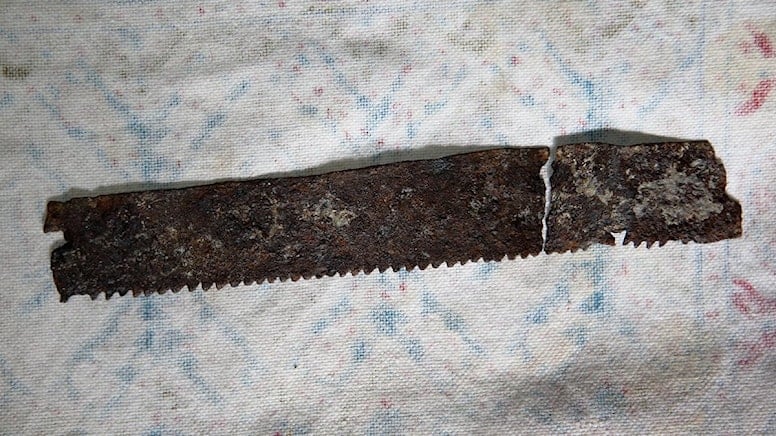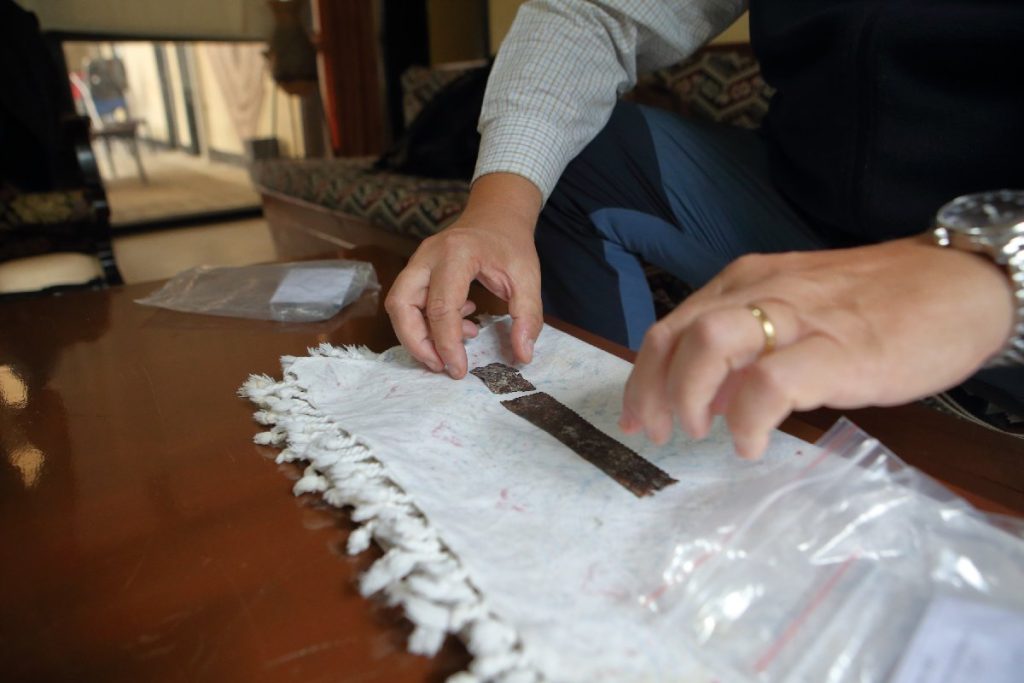
Discoveries in the Hittite capital of Hattusa never cease
Discoveries never end in Hattusa, the capital of the Hittites who founded the magnificent empire of the Bronze Age. After the piece of ivory decoration with a sphinx found last week, a 2250-year-old saw was unearthed today.
Archaeological excavations in Hattusa, located in the Boğazkale district of Çorum, began in 1906 and have been conducted under the leadership of Prof. Dr. Andreas Schachner on behalf of the German Archaeological Institute since 2006.
A saw, 20 centimeters in length and believed to have been used during the Galatian period, was discovered on the northwest slope of the lower town area referred to as the Great Fortress in Hattusa.
Excavation Director Prof. Dr. Andreas Schachner stated that the saw is an important historical find.
📣 Our WhatsApp channel is now LIVE! Stay up-to-date with the latest news and updates, just click here to follow us on WhatsApp and never miss a thing!!

Schachner stated, “This saw was found in a building from the Galatian period within the excavation area. It’s particularly intriguing to find a saw from this period. We conducted some research, and there aren’t many comparable examples. We managed to identify a few examples from later Roman periods, but a saw dating back to at least the 3rd century BC remains unseen, at least in Anatolia.”
Schachner mentioned that only the iron part of the saw remains, stating, ‘From the holes on both sides of the saw, we infer that there was a semicircular handle attached to it. This suggests that craftsmen of the period might have held and operated the saw by gripping it with a wooden handle.”
He further remarked, “We have noticed similarities between this saw and those used thousands of years ago. Upon detailed examination, when we look at the teeth of the saw, we can say it closely resembles tools and equipment used up to modern or recent times. The iron might be a bit thicker, but aside from that, it’s similar in style to contemporary ones. This indicates that humans don’t readily change a tool that works efficiently.”
Cover Photo: AA
You may also like
- A 1700-year-old statue of Pan unearthed during the excavations at Polyeuktos in İstanbul
- The granary was found in the ancient city of Sebaste, founded by the first Roman emperor Augustus
- Donalar Kale Kapı Rock Tomb or Donalar Rock Tomb
- Theater emerges as works continue in ancient city of Perinthos
- Urartian King Argishti’s bronze shield revealed the name of an unknown country
- The religious center of Lycia, the ancient city of Letoon
- Who were the Luwians?
- A new study brings a fresh perspective on the Anatolian origin of the Indo-European languages
- Perhaps the oldest thermal treatment center in the world, which has been in continuous use for 2000 years -Basilica Therma Roman Bath or King’s Daughter-
- The largest synagogue of the ancient world, located in the ancient city of Sardis, is being restored











Leave a Reply